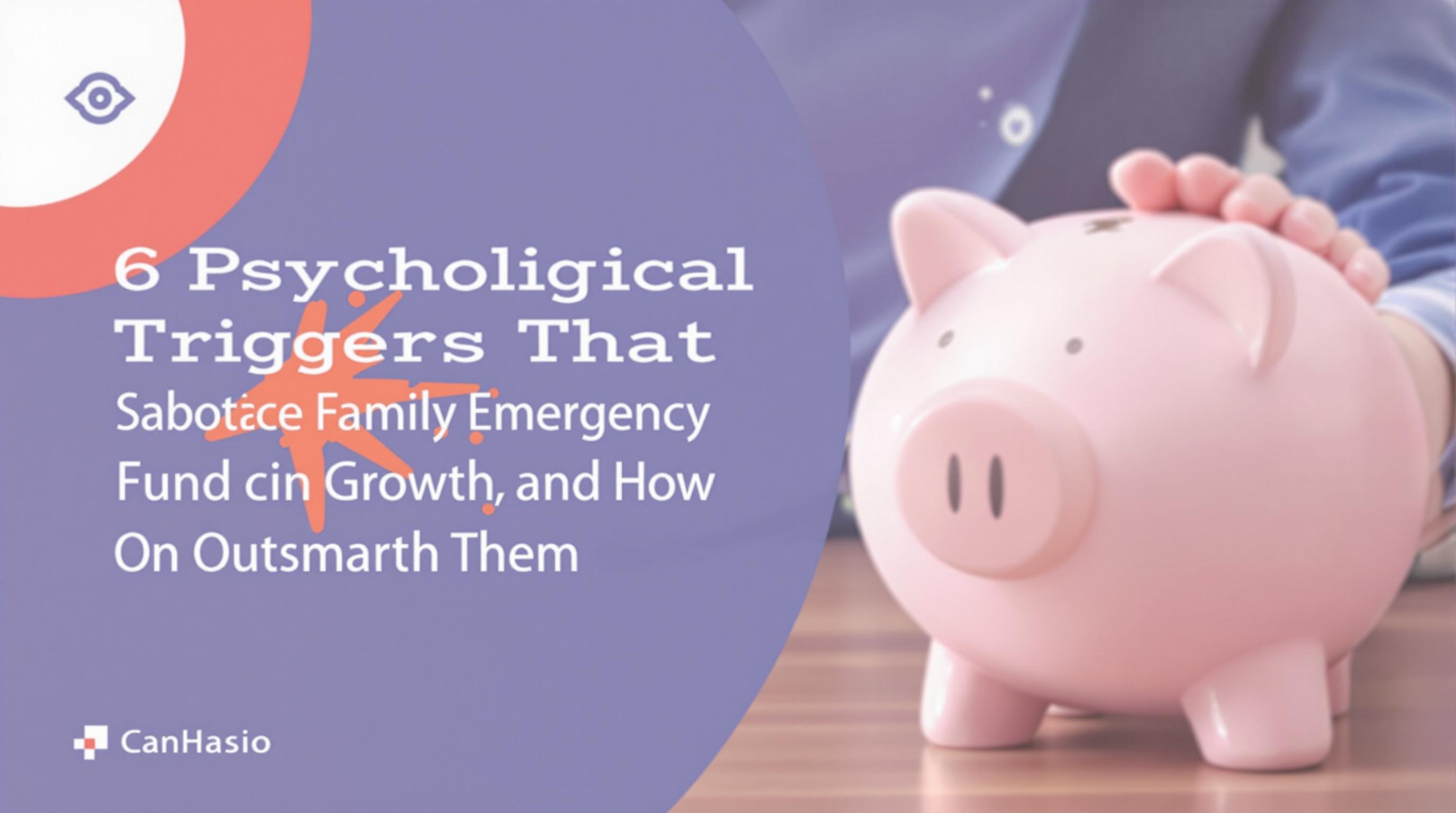Related Articles
- Top 5 Eco-Friendly Wallets Released Since 2019 That Blend Style with Smart Money Management
- Unlocking the Psychology of Spending: How Emotional Triggers Sabotage Your Saving Habits Without You Noticing
- Top 6 Revolutionary Micro-Investment Tools Launched Since 2019 Transforming Family Emergency Cash Reserves
- Top 6 New Credit Builder Cards and Apps From the Past Five Years That Actually Speed Up Your Score Growth
- Top 6 Innovative Debt Restructuring Tools from 2019 to 2024 That Outsmart Traditional Refinancing Options
- How Identity Protection Plans Intersect with Cyberpsychology to Influence Consumer Behavior and Risk Perception
Hidden Psychological Barriers Preventing Families from Building Crisis Savings and How to Overcome Them
Hidden Psychological Barriers Preventing Families from Building Crisis Savings and How to Overcome Them
Many families struggle to build crisis savings due to unseen psychological barriers, but understanding these mental blocks and applying practical strategies can lead to financial resilience. This article explores these hidden obstacles and offers varied, evidence-based ways to overcome them.
The Invisible Roadblocks: How Cognitive Biases Sabotage Savings
Imagine standing in front of a vending machine, knowing you should save money but instead giving in to that tempting candy bar. This simple scenario mirrors how cognitive biases work against family savings goals. For instance, present bias tempts people to prioritize immediate pleasures over future benefits, making that emergency fund a distant priority.
Studies from behavioral economics highlight that hyperbolic discounting—the tendency to choose smaller, immediate rewards over larger, delayed ones—often causes families to devalue the importance of saving for an emergency that feels abstract and far away. These biases are automatic, hardwired mental shortcuts designed to help quick decision-making but often derail long-term planning.
Story Time: The Martinez Family’s Wake-Up Call
Take the Martinez family from Houston. They had consistently struggled to save due to their habit of “rewarding” themselves after each paycheck. When Mr. Martinez lost his job unexpectedly, they had no financial cushion. This crisis highlighted how deeply ingrained habits and emotional responses can stall savings progress. Changing their mindset required more than just budgeting; their entire approach to money had to evolve.
Addressing Emotion-Driven Spending
Emotions figure prominently in spending decisions. Anxiety about the future paradoxically drives some to defer saving because it feels overwhelming. Others use retail therapy as a short-term mood booster. Recognizing this pattern is crucial. Journaling spending triggers or consulting with a financial therapist can unearth these emotional spending habits.
Formal Insight: The Role of Financial Literacy and Confidence
Numerous studies underscore the link between financial literacy and savings behavior. According to the FINRA Investor Education Foundation, only 34% of adults in the United States can answer four or five basic financial literacy questions correctly. This gap creates a psychological barrier, as many families feel intimidated and unsure where to start, leading to procrastination and avoidance.
Empowering families with education tailored to their cultural and socio-economic context not only boosts confidence but also instills a sense of control. Programs that combine knowledge transfer with interactive tools, such as mobile saving apps that provide immediate feedback, have seen promising success rates.
Humorous Take: Why Saving Is Like Dieting (And How to Cheat Smartly)
Think of saving money like dieting—not the “starve yourself” kind, but the “mostly healthy with occasional cupcake” strategy. Nobody saves by eliminating every expense; they save by setting realistic limits and forgiving slip-ups. Trying to “go cold turkey” on spending usually results in binge shopping, just like a crash diet causes binging on junk food.
So, allow yourself some budgeted fun. That way, you won’t dread saving, and those small wins build the habit muscle!
Behavioral Nudges That Work
Simple nudges such as automating transfers to a savings account or visual reminders can dramatically improve savings rates. A 2019 behavioral study revealed that households who automated at least 20% of their income to savings were 2.5 times more likely to have a 3-month emergency fund than those who didn’t.
These tactical changes leverage psychology to bypass willpower challenges.
Conversational Chat: Let’s Talk About Money Fears
“I’m just scared something worse will happen,” confides Angela, a mom juggling two jobs. Fear of an uncertain future often paralyzes families into financial inaction. It’s not mere laziness; it’s a protective emotional shield.
By discussing fears openly and normalizing financial anxiety, families can empower each other to move forward. Counseling sessions, community workshops, or even simple family meetings can demystify money, helping to replace fear with proactive planning.
Examples from Real Life: Small Steps Make a Difference
Consider the difference between Sara, a 25-year-old recent graduate, and her parents. Sara uses a pie-chart budgeting app that shows exactly where her money goes, giving her constant feedback. Her parents, however, grope in the dark, leading to missed opportunities for saving. This contrast shows how technology can bridge knowledge gaps and support better habits.
Root Causes: The Shame and Stigma Surrounding Money Talks
It’s taboo in many families to discuss finances openly, breeding shame and secrecy. This silence often prevents young adults from learning financial skills early and leads to repeated mistakes across generations. Creating safe spaces for discussions can dismantle these barriers and promote intergenerational wealth building.
Persuasive Appeal: Why Building Crisis Savings Is Non-Negotiable
Financial emergencies—job loss, medical bills, urgent home repairs—can happen to anyone. Without savings, families face high-interest debt and severe stress, impacting mental health and relationships. The National Endowment for Financial Education notes that 60% of Americans couldn’t cover an unexpected $1,000 expense without borrowing.
Building crisis savings isn’t just responsible; it’s a crucial buffer against life’s inevitable shocks. Prioritizing it can transform vulnerability into resilience.
Case Study: Turning Crisis Into Opportunity
When the Johnsons were hit by a sudden flood, their emergency savings allowed them to secure temporary housing and cover repairs seamlessly. This experience galvanized them to raise their savings target by 50%, reinforcing habits to keep their family secure.
Conclusion: Overcoming Mental Barriers Requires Awareness and Action
Psychological hurdles like cognitive biases, fear, shame, and low confidence collectively chock the path toward building crisis savings. However, by recognizing these barriers, employing behavioral strategies, embracing financial education, and fostering open communication, families can rewrite their money stories and build lasting financial security.




